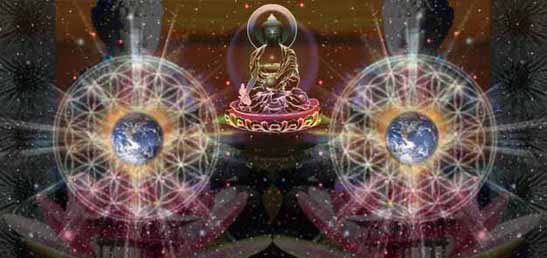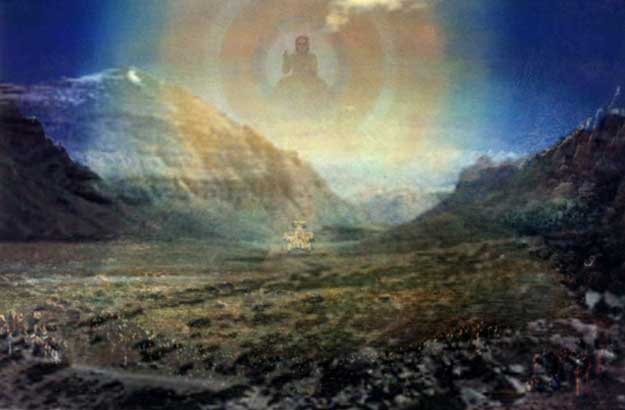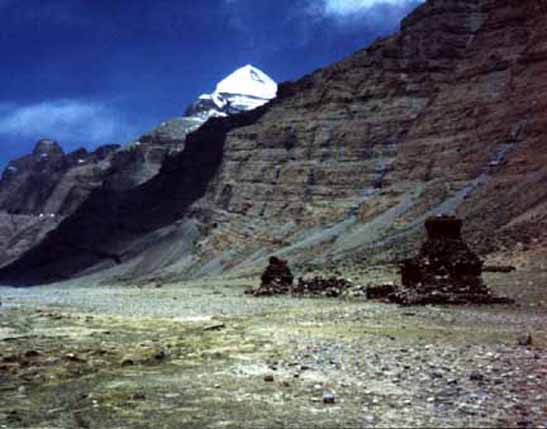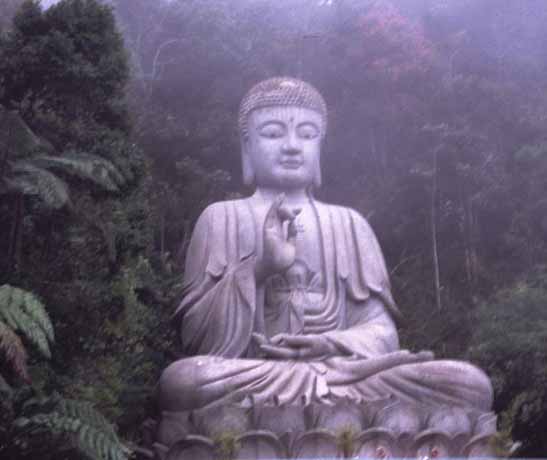

Vesak (from the name of the second month in the Hindu calendar, Vaisakha) is the most holy time in the Buddhist calendar. The word Vesak itself is the Sinhalese language word for the Pali word "Visakha". Vesak is also known as Visakah Puja or Buddha Purnima in India and Nepal, Visakha Bucha in Thailand, Waisak in Indonesia, Vesak (Wesak) in Sri Lanka and Malaysia, and Saga Dawa in Tibet. The equivalent festival in Laos is called Vixakha Bouxa. Vesak is a public holiday in many Asian countries like Sri Lanka, Malaysia, Thailand, Singapore, and so on.
The decision to agree to celebrate Vesak as the Buddha's birthday was formalized at the first Conference of the World Fellowship of Buddhists (W.F.B.) held in Sri Lanka in 1950, although festivals at this time in the Buddhist world are a centuries-old tradition. The Resolution that was adopted at the World Conference reads as follows:
That this Conference of the World Fellowship of Buddhists, while recording its appreciation of the gracious act of His Majesty, the Maharaja of Nepal in making the full-moon day of Vesak a Public Holiday in Nepal, earnestly requests the Heads of Governments of all countries in which large or small number of Buddhists are to be found, to take steps to make the full-moon day in the month of May a Public Holiday in honour of the Buddha, who is universally acclaimed as one of the greatest benefactors of Humanity."
Hence on Vesak Day, Buddhists all over the world commemorate three great events: The Birth, Enlightenment and the Passing Away of Gautama Buddha. As Buddhism spread from India to all parts of the world, the teachings were readily assimilated with the cultures of the people who accepted the teachings. As a result, Buddhist art and culture took on a rich variety of forms with profound gentleness and kindness as the Buddha expressly forbade the use of force.
The practice of Buddhism was adapted in many ways to suit the nature of the various cultures that accepted it. As a result of this, Vesak is celebrated in many different ways all over the world. But in essence many practices have become universal. This sacred day is purely a religious festival, and not a festive occasion. On this day all Buddhists are expected to reaffirm their faith in the Buddha Dhamma and to lead a noble religious life. It is a day for meditation and for radiating Loving-Kindness.
The second of the three major spiritual planetary festivals is The Wesak Festival, The Buddha's Blessing, and is celebrated in the eastern hemisphere at the Taurus full moon. This is the festival of The Buddha, divine intermediary between the highest spiritual center, Shamballa, and the Hierarchy.
The Buddha is the expression of the Wisdom of God, the embodiment of light and the indicator of divine purpose.
On Vesak day, devout Buddhists are expected to assemble in various temples before dawn for the ceremonial hoisting of the Buddhist Flag and the singing of hymns in praise of the holy triple gem: The Buddha, The Dharma (His teachings), and The Sangha (His disciples). Devotees may bring simple offerings of flowers, candles and joss-sticks to lay at the feet of their teacher. These symbolic offerings are to remind followers that just as the beautiful flowers would wither away after a short while and the candles and joss-sticks would soon burn out, so too is life subject to decay and destruction. Devotees are enjoined to make a special effort to refrain from killing of any kind. They are encouraged to partake of vegetarian food for the day.
In some countries, notably Sri Lanka, two days are set aside for the celebration of Vesak and all liquor shops and slaughter houses are closed by government decree during the two days. Birds and animals are also released by the thousands in a symbolic act to liberation, of giving freedom to those who are in captivity. However, it is not recommended that birds be released in the heart of crowded cities, because by doing so we may cause harm to the poor bewildered birds which are unable to fly far after a long period of captivity. Unscrupulous bird dealers would recapture such birds for resale to well meaning devotees. If birds are to be released it is recommended that this be done in rural areas where the birds can achieve real freedom. Some devout Buddhists will wear a simple white dress and spend the whole day in temples with renewed determination to observe the observance of the Eight Precepts.
Vesak occurs when the Sun is in Taurus and we have a Scorpio or Sagittarius Full Moon - considered by some to be the most powerful Full Moon of the year. The Sun's transit through Taurus exalts the Moon and Taurus is ruled by Venus, the spiritual ruler of Earth. Venus is identified with Mary, the World Mother. May, the month of Taurus, is the month of Mary. Venus appears in the west as the feathered serpent god Quetzalcoatl who brought enlightenment to the Mayans; in the east she is Maya, mother of the Buddha.
The lunar cycle is a wave of creation that comes to fruition when the Moon is full. Each Full Moon brings revelation and possibility for healing body, mind, and soul. The Moon is the Mother whence comes reflected Light of the spiritual Sun to nurture, support, protect, and bring to flower the seeds of creation.
The Full Moon is like a pitcher pouring out a healing elixir. The celestial dispensation continues for three days following the day of the Full Moon. Calm and balance, deep breathing, meditation, yoga, rhythmic music and dancing help for receiving the blessings of heaven.
Locally the Full Moon has strong effect in the hour following Sunset when the Moon is rising and at local Midnight when the Moon is directly overhead. This Sun in Taurus Full Moon is called Wesak (WE-sock). Mystics say that the Buddha returns now to help regenerate the Earth.
According to metaphysical tradition, the Buddha was born, attained enlightenment, and left Earthly incarnation under the Full Moon of Taurus. And the Buddha returns at this time each year to bring new light to the world. Spiritual leaders gather in Wesak Valley, a mythic place high in the Himalayas. Here initiates led by the Christ arrange themselves into a great pentagram (the Venusian emblem of world soul) while the Buddha hovers over those gathered radiating light. This cosmic alignment occurs during the eight minutes centered on the moment of the Wesak full moon.
- The Masters and the Path - Geoffrey Hodson
According to tradition, at the time of the full moon in Taurus, the Buddha comes to the Wesak Valley of the Himalayas to bring the powerful spiritual energy of Shambhalla to the assembled masters, initiates and disciples of the Hierarchy, for the assimilation and eventual distribution of this Shambhalla force throughout the world.
The Wesak Valley, lying at a rather high altitude in the foothills of the Himalayan-Tibet ranges. It is surrounded by high mountains on all sides except towards the northeast, where there is a narrow opening in the mountain ranges. The valley is bottle-shaped in contour, with the neck of the bottle to the northeast, and it widens very considerably towards the south. Up towards the northern end, close to the neck of the bottle, there a huge flat rock. There are no trees or shrubs in the valley, which is covered with a kind of coarse grass.
Approaching the time of the full moon of Taurus, pilgrims from the surrounding districts begin to gather. The holy men and the lamas find their way into the valley and fill the southern and the middle parts, leaving the northeastern end relatively free. There, so the legend runs, gathers a group of those great Beings Who are the Custodians on Earth of God's Plan for our planet and for humanity.
This group of knowers of divinity are the main participants in The Wesak Festival. They arrange Themselves in the northeastern end of the valley, in concentric circles, and prepare for a great act of service. In front of the rock, looking towards the northeast, stand Those Beings Who are called by Their disciples The Three Great Lords. These are The Christ, Who stands in the center; the Lord of living forms, The Manu, Who stands at His right; and The Lord of Civilization, who stands to His left. These three face the rock upon which rests a great crystal bowl, full of water.
Behind the grouped Masters, adepts, initiates and senior workers under God's Plan are to be found the world disciples and aspirants in their various grades and groups (either "in the body" or "out of the body"), who at this time constitute the New Group of World Servers. Those present in their physical bodies have found their way there by ordinary means. Others are present in their spiritual bodies, and in the dream state. The "dream," which they later relate, has been uniformly registered by people throughout the world, and bears the testimony to the recollection of an inner spiritual happening.
As the hour of the full moon approaches, a stillness settles down upon the crowd, and all look towards the northeast. Certain ritualistic movements take place, in which the grouped Masters and Their disciples of all ranks take up symbolic positions, and form on the floor of the valley such significant symbols as the five-pointed star, with The Christ standing at the highest point; of a triangle, with The Christ at the apex; or a cross, and other well known formations, all of which have a deep and potent meaning. This is all done to the sound of certain chanted words and esoteric phrases, called mantrams.
The expectancy in the waiting, onlooking crowd becomes very great, and the tension is real and increasing. Through the entire body of people there seems to be felt a stimulation or potent vibration which has the effect of awakening the souls of those present, fusing and blending the group into one united whole, and lifting all into a great act of spiritual demand, readiness, and expectancy. It is the climax of the world's aspiration focussed in this waiting group. These three words - demand, readiness and expectancy - best describe the atmosphere surrounding those present in this secret valley.
The chanting and the rhythmic weaving grows stronger, and all the participants and the watching crowd raise their eyes towards the sky in the direction of the narrow part of the valley. Just a few minutes before the exact time of the full moon, in the far distance, a tiny speck can be seen in the sky. It comes nearer and nearer, and grows in clarity and definiteness of outline, until the form of The Buddha can be seen, seated in the cross-legged Buddha position, clad in his saffron-colored robe, bathed in light and color, and with his hand extended in blessing.

When The Buddha arrives at a point exactly over the great rock, hovering there in the air over the heads of The Three Great Lords, a great mantram, used only once a year, at The Festival, is intoned by The Christ, and the entire group of people in the valley fall upon their faces. This Invocation sets up a great vibration or thought current which is of such potency that it reaches up from the group of aspirants, disciples and initiates who employ it, to the Being we know as God. It marks the supreme moment of intensive spiritual effort throughout the entire year, and the spiritual vitalization of humanity and the spiritual effects last throughout the succeeding months.
When The Buddha arrives at a point exactly over the great rock, hovering there in the air over the heads of The Three Great Lords, a great mantram, used only once a year, at The Festival, is intoned by The Christ, and the entire group of people in the valley fall upon their faces. This Invocation sets up a great vibration or thought current which is of such potency that it reaches up from the group of aspirants, disciples and initiates who employ it, to the Being we know as God. It marks the supreme moment of intensive spiritual effort throughout the entire year, and the spiritual vitalization of humanity and the spiritual effects last throughout the succeeding months.
The effect of this great Invocation is universal or cosmic, and serves to link us up with that cosmic center of spiritual force from which all created beings have come. The blessing is poured forth, and The Christ, as the representative of humanity, receives it in trust, for distribution.
Thus, so the legend runs, The Buddha returns once a year to bless the world, transmitting renewed spiritual life, through The Christ. Slowly then The Buddha recedes into the distance, until again only a faint speck can be seen in the sky, and this eventually disappears. The whole ceremonial blessing, from the time of the first appearance in the distance until the moment The Buddha fades out of view, takes just eight minutes.
The Buddha's annual sacrifice for humanity (for He comes back only at great cost) is over, and He returns again to that high place where He works and waits. Year after year He comes back in blessing; year after year, He and His great brother, The Christ, work in the closest cooperation for the spiritual benefit of humanity. In these two great Sons of God have been focussed two aspects of divine life, and They act together as Custodians of the highest type of spiritual force to which our humanity can respond. Through The Buddha, the wisdom of God is poured forth. Through The Christ, the love of God is manifested in humanity, and it is this wisdom and love which pour forth upon humanity each Wesak full moon.
When The Buddha has again disappeared, the crowd rise to their feet; the water in the bowl is distributed in tiny portions to the Masters, initiates and disciples, and they then go their way to their place of service. The crowd, who have all brought their little cups and vessels of water, drink of them and share with others. In this beautiful "water ceremony of communion" is portrayed the symbol of the new age which is upon us, the Aquarian Age, the age of the Water Carrier.
In this ceremony is perpetuated for us the story of the universality of God's love, the need for our individual purification, and the opportunity to share with each other that which belongs to all. The water, which has been magnetized by the presence of The Buddha and of The Christ, carries certain properties and virtues of a healing and helpful nature.
Alice Bailey - The Wesak Festival
A Stupa is a mound-like structure containing Buddhist relics, typically the remains of Buddha, used by Buddhists as a place of worship. After "stupa," "chorten" is the most commonly encountered English term. The term "reliquary" is sometimes used, after a Roman Catholic functional equivalent. Stupas are an ancient form of mandala.


Buddah
~ Buddhism